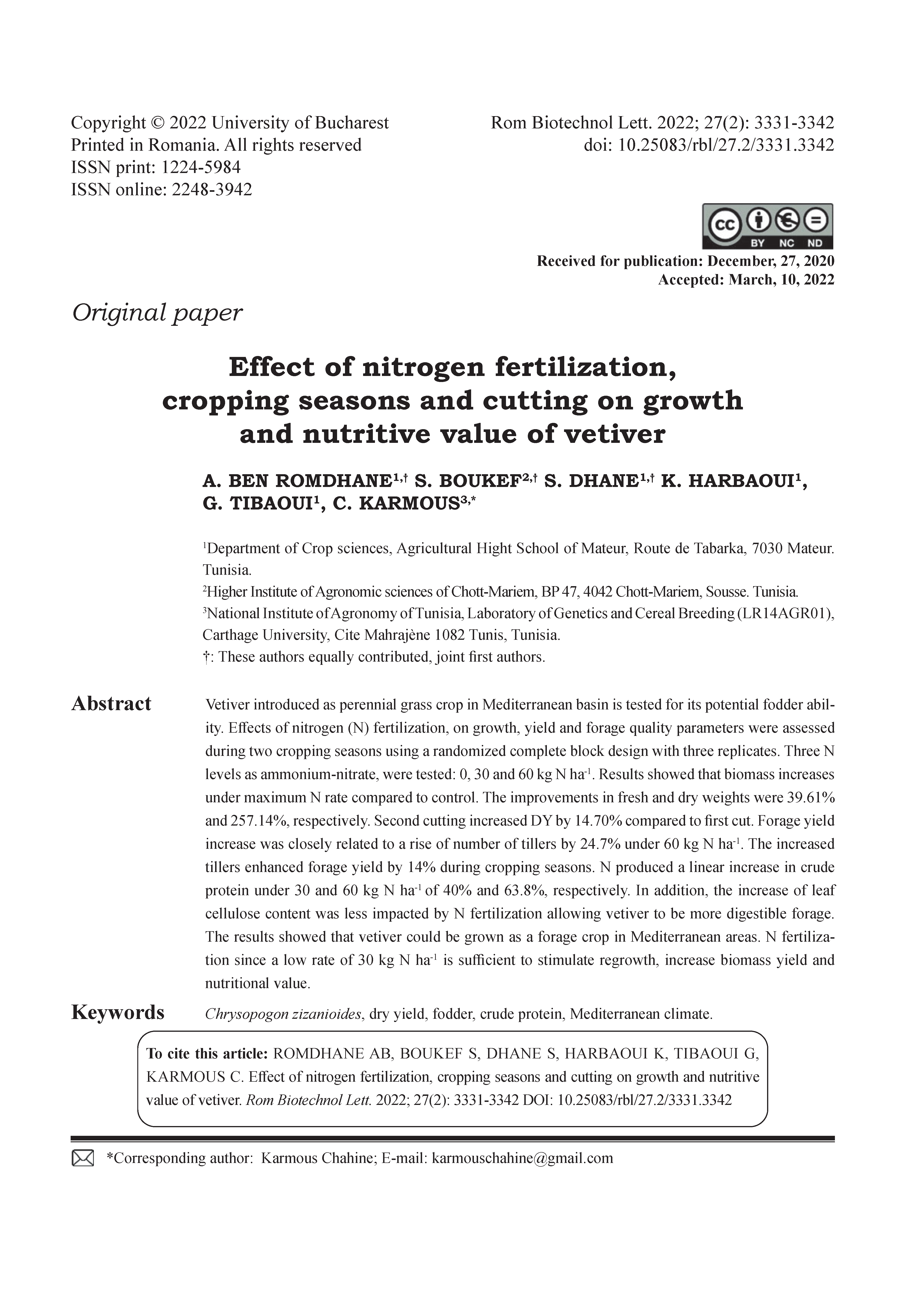Effect of nitrogen fertilization, cropping seasons and cutting on growth and nutritive value of vetiver
DOI:
https://doi.org/10.25083/rbl/27.2/3331.3342Keywords:
Chrysopogon zizanioides, dry yield, fodder, crude protein, Mediterranean climateAbstract
Vetiver introduced as perennial grass crop in Mediterranean basin is tested for its potential fodder ability. Effects of nitrogen (N) fertilization, on growth, yield and forage quality parameters were assessed during two cropping seasons using a randomized complete block design with three replicates. Three N levels as ammonium-nitrate, were tested: 0, 30 and 60 kg N ha-1. Results showed that biomass increases under maximum N rate compared to control. The improvements in fresh and dry weights were 39.61% and 257.14%, respectively. Second cutting increased DY by 14.70% compared to first cut. Forage yield increase was closely related to a rise of number of tillers by 24.7% under 60 kg N ha-1. The increased tillers enhanced forage yield by 14% during cropping seasons. N produced a linear increase in crude protein under 30 and 60 kg N ha-1 of 40% and 63.8%, respectively. In addition, the increase of leaf cellulose content was less impacted by N fertilization allowing vetiver to be more digestible forage. The results showed that vetiver could be grown as a forage crop in Mediterranean areas. N fertilization since a low rate of 30 kg N ha-1 is sufficient to stimulate regrowth, increase biomass yield and nutritional value.




